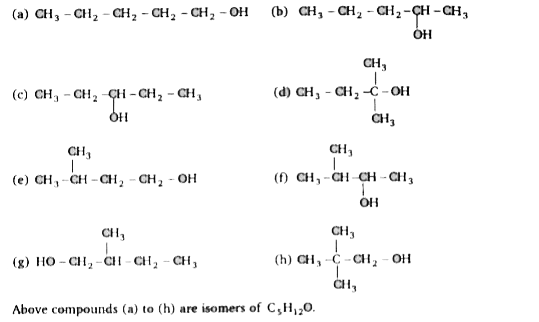The most stable alkene is
CH2=CH−CH2−CH3
CH2=C∣CH3−CH=CH2
CH2=CH−CH=CH2
CH3−CH=CH−CH3
To determine the most stable alkene from the given options, we will analyze the stability based on the degree of substitution and the presence of conjugation in the alkenes.
1. Identify the Given Alkenes:
- Option A: CH2=CH-CH2-CH3
- Option B: CH2=C(CH3)-CH=CH2
- Option C: CH2=CH-CH=CH2
- Option D: CH3-CH=CH-CH3
2. Determine the Type of Alkenes:
- Options A and D have only one double bond and are simple alkenes.
- Options B and C have two double bonds and are classified as conjugated dienes.
3. Stability of Alkenes:
- Conjugated dienes (like those in options B and C) are generally more stable than simple alkenes due to resonance stabilization.
- Therefore, we can eliminate options A and D as they are less stable compared to B and C.
4. Compare the Stability of B and C:
- Option B: CH2=C(CH3)-CH=CH2
- This alkene has a double bond between a carbon that has a methyl group (C(CH3)) and another carbon, making it more substituted.
- Option C: CH2=CH-CH=CH2
- This alkene has two terminal double bonds and is less substituted.
5. Substitution and Hyperconjugation:
- More substituted alkenes are more stable due to increased hyperconjugation.
- In option B, the double bond is between a tertiary carbon (due to the methyl group) and another carbon, leading to more hyperconjugating structures.
- In option C, the double bonds are less substituted, leading to fewer hyperconjugating structures.
6. Conclusion:
- Since option B has more substitution and thus more hyperconjugation, it is the most stable alkene among the options provided.
Final Answer:
The most stable alkene is Option B: CH2=C(CH3)-CH=CH2.
- Option A: CH2=CH-CH2-CH3
- Option B: CH2=C(CH3)-CH=CH2
- Option C: CH2=CH-CH=CH2
- Option D: CH3-CH=CH-CH3
- Options A and D have only one double bond and are simple alkenes.
- Options B and C have two double bonds and are classified as conjugated dienes.
- Conjugated dienes (like those in options B and C) are generally more stable than simple alkenes due to resonance stabilization.
- Therefore, we can eliminate options A and D as they are less stable compared to B and C.
- Option B: CH2=C(CH3)-CH=CH2
- This alkene has a double bond between a carbon that has a methyl group (C(CH3)) and another carbon, making it more substituted.
- Option C: CH2=CH-CH=CH2
- This alkene has two terminal double bonds and is less substituted.
- More substituted alkenes are more stable due to increased hyperconjugation.
- In option B, the double bond is between a tertiary carbon (due to the methyl group) and another carbon, leading to more hyperconjugating structures.
- In option C, the double bonds are less substituted, leading to fewer hyperconjugating structures.
- Since option B has more substitution and thus more hyperconjugation, it is the most stable alkene among the options provided.
The most stable alkene is Option B: CH2=C(CH3)-CH=CH2.
Topper's Solved these Questions
- BOOK - AAKASH INSTITUTE ENGLISHCHAPTER - ORGANIC CHEMISTRY : SOME BASIC PRINCIPLES AND TECHNIQUES EXERCISE - Assignment(SECTION B)6videos
ORGANIC CHEMISTRY : SOME BASIC PRINCIPLES AND TECHNIQUES
- BOOK - AAKASH INSTITUTE ENGLISHCHAPTER - ORGANIC CHEMISTRY : SOME BASIC PRINCIPLES AND TECHNIQUES EXERCISE - Assignment(SECTION C)73videos
ORGANIC CHEMISTRY : SOME BASIC PRINCIPLES AND TECHNIQUES
- BOOK - AAKASH INSTITUTE ENGLISHCHAPTER - ORGANIC CHEMISTRY : SOME BASIC PRINCIPLES AND TECHNIQUES EXERCISE - Exercise70videos
ORGANIC CHEMISTRY : SOME BASIC PRINCIPLES AND TECHNIQUES
- BOOK - AAKASH INSTITUTE ENGLISHCHAPTER - MOCK_TEST_20EXERCISE - EXAMPLE29videos
MOCK_TEST_20
- BOOK - AAKASH INSTITUTE ENGLISHCHAPTER - ORGANIC CHEMISTRY: SOME BASIC PRINCIPLE AND TECHNIQUESEXERCISE - TRY YOURSELF28videos
ORGANIC CHEMISTRY: SOME BASIC PRINCIPLE AND TECHNIQUES
Similar Questions
Knowledge Check
- Question 1 - Select One
The most stable diene is :
A B
B C
C D
D
- Question 2 - Select One
Consider the following reaction:

Which response contains all the correct statement about this process?
(1) Dehydration
(2) E2 mechanism
(3) Carbon skeleton migration
(4) Most stable alkene will form
(5) Single -step reactionA1,3B1,2,3C1,2,5D1,3,4 - Question 3 - Select One
The most stable free radical is
A⋅CH3BCH3⋅CH2C(CH3)2⋅CHD(CH3)3⋅C


